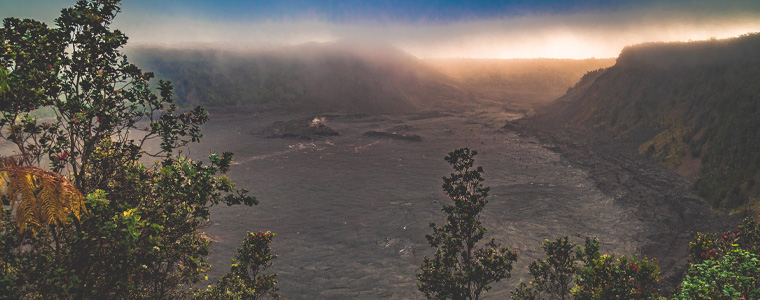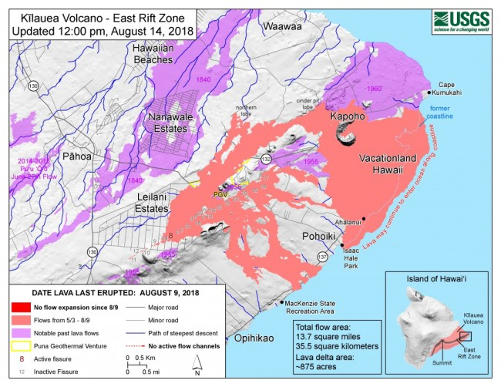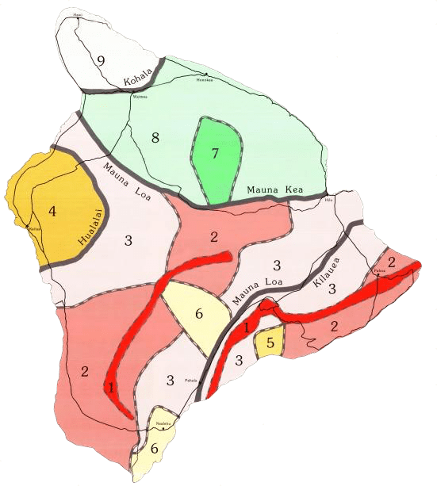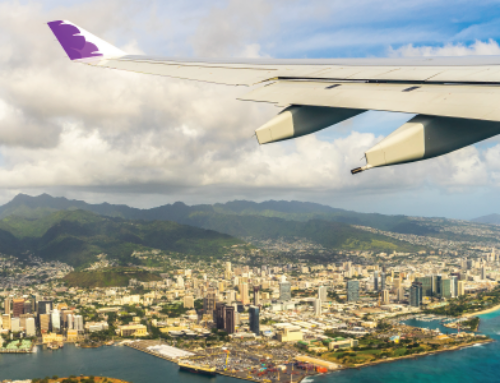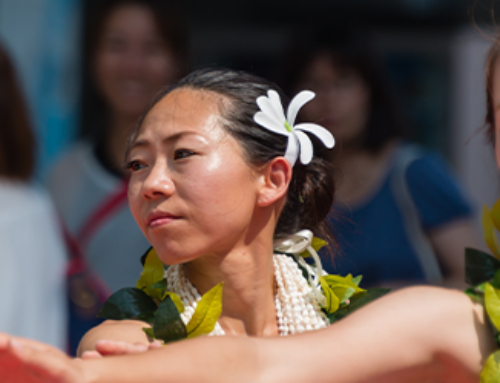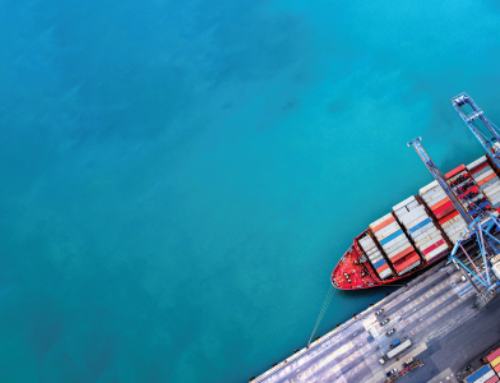On December 20, 2020, after nearly two years of inactivity, the United States Geological Survey’s Hawaiian Volcano Observatory noticed a glow within the Halemaumau crater at the summit of Kilauea on the Big Island. The watery lake within the crater soon disappeared as the volcano erupted in a plume, confirming that Kilauea, the most active volcano on Hawaii and one of the most active in the world, was once again making its presence known on the island.
Or, if you prefer, Pele, the goddess of Hawaii’s volcanoes, was making her presence known. Pele is one of the goddesses that the island chain’s first human settlers brought with them from Polynesia, and her influence is well documented in strange and mysterious stories that continue into the present day. Sometimes, Pele appears to people as a beautiful, young woman. Other times, she looks like someone’s tutu (grandmother). Those who take care of her are rewarded, and those who don’t usually fall prey to her wrath, which comes in the form of hot lava and steam.
No matter whether you believe Kilauea’s eruption is simply a geographical phenomenon or a message from the goddess Pele herself, volcano eruptions do have their effect on the Big Island. Additionally, the recent activity at Kilauea has sparked some questions among potential residents, such as:
- Has the recent eruption impacted the whole island?
- Is it safe to be on the Big Island while Kilauea is erupting?
- What about the other two active volcanoes on the island, Mauna Loa and Hualalai? Will they erupt, too?
- Does the volcanic activity on the Big Island affect the other Hawaiian islands?
We’ll answer those questions (and more!) to give you a good understanding of the volcanoes on Hawaii’s Big Island—and their impact on the rest of the state. If you’re considering a move to the Big Island, the information we’ll share may influence which area of the island you choose to live in, as well as help you make a confident choice around your moving decision.
Let’s start by understanding exactly how important volcanoes have been to Hawaii’s history.
No Volcanoes, No Hawaii
You might be surprised to learn that the Hawaiian Islands owe their entire existence to volcanic activity. As you may know, the Earth’s crust is made up of tectonic plates, which can form volcanoes at the edges where these plates come together. Underneath the Hawaiian islands, which lie in the middle of the Pacific Plate, scientists believe there’s a “hot spot,” where super-heated magma pushes through cracks in the plate.
The Pacific Plate, like the rest of the Earth’s tectonic plates, continues to shift, but the hot spot, which is part of the Earth’s mantle, does not. So gradually, as the Pacific plate moved, each island in the chain was built in succession. More than five million years ago, as the hot spot spewed lava, Kauai and Niihau were formed. Oahu was next, followed by Maui, then, most recently, the Big Island.
Because the hot spot is currently under the Big Island, volcanoes like Kilauea continue to erupt. Additionally, as they erupt, the Big Island continues to grow in size. Since it started erupting in 1983, Kilauea’s activity has added 585 acres of new land to the island. It even created a new black sand beach at Isaac Kepookalani Hale Beach Park (also known as Pohoiki).
Kilauea, which means “spewing” or “much spreading” in Hawaiian, is Hawaii’s youngest volcano, but it’s not its only active volcano. As we mentioned, Mauna Loa and Hualalai are also both considered active. However, Mauna Loa hasn’t erupted since 1984 and Hualalai since 1801.
That said, Kilauea’s massive eruption in 2018 made it one of Hawaii’s best-known volcanoes. For four months, a swath of land in the southeast area of the Big Island was covered with ash and lava flows, destroying 700+ homes and residential areas in the island’s Puna District.
If you saw any of the footage of lava creeping through the neighborhoods at a slow but deadly pace, you might wonder if it’s safe to live on the Big Island at all. To offer you some perspective, nearly 150,000 Big Island residents have decided that it is. We’ll introduce you to a tool that makes it a little clearer as to where the potential danger zones might lie.
Understanding the Big Island’s Lava Zones
First of all, if you’re not familiar with the Big Island’s geography, it’s easy to imagine that Kilauea’s eruption devastated the entire island. Many Big Island residents—and residents of Oahu, Maui, and Kauai—got texts and calls from friends and family inquiring whether they were in any danger from Kilauea. (Mahalo for checking on us!)
It’s understandable considering that more than 700 homes in Leilani Estates and Lanipuna Gardens were destroyed and over 2,500 people were evacuated.
However, if you take a look at this U.S. Geological Survey map, you’ll see that the 2018 Kilauea eruption was confined to a small patch of land on the southeast side of the island.
(That said, other parts of the island did experience effects from the eruption other than lava flows. More on that in a moment!)
To help assess potential threats from the Big Island’s volcanoes, the USGS created a Lava Zone map. The map divides the island into nine different zones, where Zones 1 and 2 are at the highest risk, and Zones 3–9 are at lower risk.
To give you a yardstick for understanding these Lava Zones, take a look at Hulalai, which is considered an active volcano, putting the area to its west into Lava Zone 4. This zone also happens to be the home of Kona International Airport. Similarly, Hilo International Airport is located in Zone 3. If the government authorities felt comfortable locating their major airports within Lava Zones 3 and 4, that might give you a little more confidence to house hunt in these zones, too.
That said, even if you’re out of the way of a lava flow, when a volcano erupts on the Big Island, it can still have an widespread effect on surrounding areas.
How Do Volcanic Eruptions Affect the Big Island (and Other Islands)?
Ash
Even if you’re not in the direct path of the lava flow from an eruption, the wind can blow ash around. If a significant eruption occurs while the prevailing North East/East North East trade winds are blowing, ash can end up on the southwest side of the Big Island in the Kau District as far as Ocean View.
VOG
Vog (Volcanic smOG) is a form of air pollution resulting from volcanic emissions that include sulfur dioxide, carbon dioxide, and other gasses. When Kilauea erupts, winds push the VOG toward other parts of the island. The NE/ENE trade winds usually send VOG toward the western Kona coast, as well as and southwestern parts of the Big Island. In the case of Kona winds, which blow from the South West/South South West, VOG will get pushed in the opposite direction, toward Hilo. Depending on the strength of the winds, VOG can get pushed as far as Maui.
Those sensitive to VOG report effects such as headaches, breathing difficulties, increased susceptibility to respiratory issues, watery eyes, sore throat, flu-like symptoms, and a general lack of energy If you or someone in your family has asthma or another respiratory illness, you may want to do some more research into VOG before choosing a place to live. (And if you’re torn between the Kona side and the Hilo side, we might be able to help you decide.)
Rich Soil
In many parts of Hawaii, you’ll discover how easy it is to grow all kinds of plants, flowers, vegetables, herbs, and more. Some have said it’s the kind of place where you can toss an avocado pit out your window and find yourself with a tree a few years later. Part of this is due to the mineral-rich soil that’s a byproduct of the volcanic eruptions that formed these islands. In other words, Hawaii’s hot spot left behind the gift of nutrient-filled soil that’s incredibly welcoming to just about all kinds of plants.
Wonder and Awe
More than a million people visit Volcanoes National Park on the Big Island every year. (In 2017, that number was more than two million!) There’s no denying it: The eruption of a volcano is a visible reminder of the power of nature at work, and these earth-changing events can inspire awe in even the most cynical person. Add to that the thread of myth running through these events that is tied to the mysterious goddess Pele, and you have fascinating conjunction that easily captures the imagination.
Making Your Home on the Slopes of Hawaii’s Volcanoes
Given the island chain’s geological history, you’ll be living on the slopes of a volcano no matter where you decide to live. However, when you choose to live on the Big Island, you’ll be living in the company of the most active volcanoes in the Hawaiian Islands.
That said, now that you’re equipped with an understanding of where the island’s volcanoes are located—and their potential effects on their surrounding areas—you’ll have all the information you need to confidently choose a spot to call “home” on the Big Island. And don’t forget to keep your eye out for Madam Pele. She tends to turn up when you least expect her!
______
Need help moving to the Big Island? With teams and warehouses on both the Kona and Hilo sides of the Big Island, we’re perfectly positioned to help you make an easy transition. (And we’re happy to talk story about Tutu Pele!) To get started, simply request a complimentary quote, and we’ll be in touch!
Tell us about your move!
